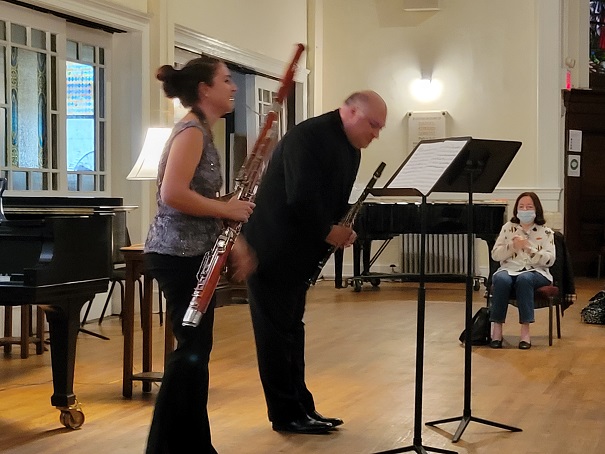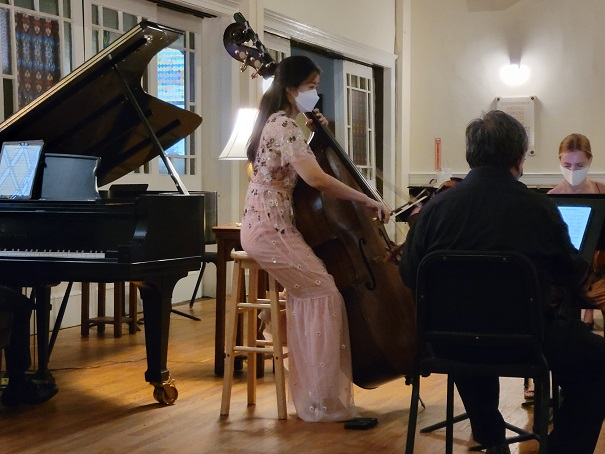Concert Diary: “Ties to Beethoven” with the Jupiter Players
October 4, 2021
New York, N.Y.
During the year that I was working on The Complete Beethoven, I would come across works that were once thought to be composed by Beethoven but are now considered to be “spurious” or “of doubtful authenticity.” Such is the case with three Duos for Clarinet and Bassoon, cataloged as WoO ("without opus number") 27.
If we don’t know it’s really Beethoven, why bother with such music at all? Well, they might be by Beethoven, and if they’re not by Beethoven, then they were likely composed by someone who was within Beethoven’s circle, perhaps close enough to Beethoven that the music was mistakenly attributed. In that case, the music is of interest as having a tie to Beethoven.
This was apparently the reason why the third of these Duos for Clarinet and Bassoon was included in today’s program by the Jupiter Symphony Chamber Players entitled “Ties to Beethoven.” All four composers represented in the program — including the composer of these Duos — has some kind of tie to Beethoven, and perhaps is Beethoven himself.
I well remembered the peculiar instrumentation of these three WoO 27 Duos from encountering them last year, so it was certainly fun to hear at least one of them live. The third of the Duos has just two movements: An Allegro followed by a Theme with 4 variations and an allegro coda, and I found it enchanting. Whether it’s authentic Beethoven or not, I’m still not sure. If so, it’s definitely early Beethoven, perhaps as early as Beethoven’s teenage years.
Here’s bassoonist Gina Cuffari and clarinetist Vadim Lando following the performance:
Next up on the program was a piece entitled Un Souvenir de Beethoven by a Mallorcan composer I never heard of, Pedro Tintorer. He studied with Franz Liszt and formed the first music school in Barcelona. The Souvenir de Beethoven apparently dates from the 1840s, about two decades after Beethoven’s death, and it’s for the unusual ensemble of violin, viola, double bass and piano. Here are the string players getting ready for the performance, including Ha Young Jung on double bass:
I found this work surprisingly engaging. Although it apparently quotes some early Beethoven, the romantic lushness of the first movement Andante marks it clearly as post-Beethoven and post-Schubert. The second movement Allegro begins with a hearty attitude but there’s a mysterious soft passage in the middle, and it ends quite magnificently.
Aside from Maybe-Beethoven, the most famous composer on the program was Italian-Spanish composer Luigi Boccherini, who lived from 1743 to 1805, overlapping Beethoven. Boccherini was quite prolific, writing well over a hundred string quintets and almost a hundred string quartets. We heard one of his Guitar Quintets (No. 4 in D Major) — a work for guitar and string quartet. It began with a sweet spring-is-sprung bird-chirping Pastorale, followed by a folksy Allegro peasant dance. A short Grave movement went right into an exciting rhythmic Fandango. The cellist’s part in this last movement is particularly interesting, featuring a couple glissandi and a passage where the cellist plays castanets. (Look on middle of page 7 of the cellist’s score if you don’t believe me.)
Following intermission was a work by another composer I had never heard of, George Onslow (1784 – 1853), who is considered a French composer despite having an English father and an English name. Onslow’s Grand Sextet in A Minor (Op. 77b) from 1848 is a reduction of a nonet, but still retains a big sound with piano, string quartet, and double bass. (Another version exists for piano, flute, clarinet, bassoon, horn, and double bass.) The opening Allegro sounded almost like piano concerto, but the remainder of the work was surprisingly low-key. A haunting minuet with an eerily moving trio was followed by a slow movement theme and 5 variations, and the Finale eschewed flashiness for something decidedly grander.

